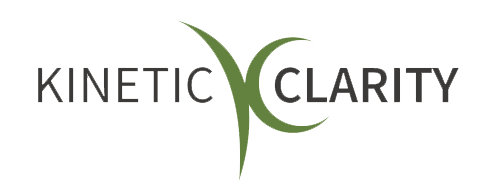Developing an Employee Retention Strategy that Works
Keeping top talent stabilizes operations, enhances productivity, and drives profitability.

It’d be an understatement to say that keeping your top talent in place is always a good strategy for business continuity. After all, studies by Gallup, Payactive, Enrich, and others point to a loss of thousands of dollars each time an employee quits. As the Great Resignation showed, that can get extremely expensive.
As organizations strive to navigate market complexities and drive growth, the engagement and stability of the workforce play pivotal roles. For example, a stable workforce strengthens company culture and boosts morale. It also leads to greater productivity and satisfaction across the organization.
Yet employee retention isn’t just about keeping staff. It’s about creating an environment where they choose to stay. This cultivated company culture helps mitigate high turnover costs, such as disrupted projects and the resources spent on recruiting and training. This is part of that multibillion-dollar annual loss I mentioned above.
Successful retention strategies include recognizing and responding to your employees’ needs as framed by your organization’s culture.
With that idea in mind, let’s explore how strategic retention efforts can significantly impact business outcomes. We’ll see if we can create a blueprint for transforming employee retention into an opportunity for growth and competitive advantage.
Off we pop!
Understanding the Importance of Employee Retention
Employee retention is a cornerstone of operational stability, productivity, and profitability. Each time an employee exits, it sets off a chain reaction of “recruit, train, adapt” that strains your resources and time. However, the real impact stretches far beyond financial losses—it resonates through the core of the organization’s culture and morale.
The value of a stable workforce can’t be overstated. It’s the backbone of a robust company culture. Stability enhances the collective spirit, driving higher satisfaction and productivity across the board.
I came across a 2017 article in the Harvard Business Review entitled “The Power of Collective Ambition.” The article defines collective ambition as:
"--a summary of how leaders and employees think about why they exist, what they hope to accomplish, how they will collaborate to achieve their ambition, and how their brand promise aligns with their core values.
These companies don’t fall into the trap of pursuing a single ambition, such as profits; instead, their employees collaborate to shape a collective ambition that supersedes individual goals and [considers] the key elements required to achieve and sustain excellence.”
Employees who see consistent faces, understand shared goals, and feel part of a collective journey are more likely to commit to their roles and contribute positively. This collective ambition, to borrow the term from the article, reduces the risks associated with turnover, ensuring projects remain on track and strategic goals are met with less disruption.
You can leverage your culture as a strategic asset by framing employee retention as an opportunity to build a stronger, more cohesive workforce. This means not just filling seats, but nurturing an environment that aligns with employees' aspirations and your company’s objectives.
3 Ways to Assess Current Retention Rates and Challenges
The first step in crafting an effective retention strategy is understanding your organization's existing turnover trends. Analyzing employee turnover data helps identify the departments or roles with the highest attrition rates and the reasons behind them. This data serves as a diagnostic tool to address specific issues systematically.
Gather Employee Feedback
One of the most effective ways to understand retention challenges is to listen to current and departing employees. Regular feedback through surveys, one-on-one interviews, and exit interviews provides insights into the employee experience and highlights areas for improvement. This feedback is invaluable as it comes directly from those affected by the company’s policies and culture.
Team Coaching
Organizations that invest in team coaching often see a transformation in their teams from groups of individuals working alongside each other to united entities that are deeply invested in their mutual success and the success of the business. This transformation is key to retaining top talent and fostering a positive organizational culture that naturally attracts and keeps high performers.
Benchmarking
Comparing your organization’s retention metrics against industry standards provides a benchmark for assessing performance. This comparison can help identify whether an issue is specific to your company or is an industry-wide challenge, and it guides the development of more targeted retention strategies.
4 Components of a Successful Retention Strategy
Developing an effective employee retention strategy hinges on several elements that address the workforce's diverse needs and aspirations. At the heart of these strategies is the commitment to creating a workplace that employees are eager to contribute to over the long term.
What motivates your employees and team members to stick around? Here are a few of the top motivators for employee retention:
1. Competitive Compensation and Benefits
Compensation packages are a foundational aspect of any retention strategy. This includes fair pay, comprehensive health benefits, retirement plans, and other perks such as wellness programs and family leave policies.
Top talent looks for employers who value their contributions in rewards and professional support. Ensuring your compensation packages are competitive within your industry helps to prevent turnover.
2. Career Development Opportunities
Career progression is a significant motivator for many employees. Providing clear paths for advancement and development opportunities, such as training programs, mentoring, and succession planning, demonstrates a commitment to individuals' growth. When employees see a future within the organization where they can grow and evolve, they are more likely to remain engaged and committed.
3. Work-Life Balance
Emphasizing work-life balance through flexible working hours, remote work options, and ample paid time off is essential in today's work environment.
Employees are increasingly seeking a better balance between their professional and personal lives, and companies that facilitate this balance tend to have higher retention rates. These practices not only support the well-being of employees but also cultivate a culture that respects and acknowledges their outside lives and responsibilities.
4. Recognition and Rewards
Regularly recognizing and rewarding employees for their hard work and achievements can significantly enhance morale and loyalty. Recognition programs can range from formal awards and bonuses to informal acknowledgments such as public praise or small personal incentives. These gestures show employees that their efforts are seen and valued, which can boost job satisfaction and retention.
Implementing these components requires a strategic approach tailored to your organization's specific needs and culture. By focusing on these key areas, you can develop a more effective retention strategy that reduces turnover and enhances overall employee engagement and organizational performance.
What is the role of leadership in implementing strategy?
The role of leadership in implementing an employee retention strategy is pivotal. As leaders, we’re the architects and standard-bearers of our company's retention efforts. Your involvement can dramatically influence the success and effectiveness of your retention strategy. It can also shape your organizational culture in a way that supports retention.
Here are some specific ways in which leadership plays a crucial role:
Vision Setting and Strategic Alignment
Leaders must clearly define and communicate the vision and objectives behind the retention strategy. This ensures that the efforts are integrated into the broader business goals rather than sporadic initiatives. Aligning your retention strategy with the company’s mission and values sets a clear direction that guides the actions of all levels of management, not just your own.
Modeling Desired Behaviors
Your behavior sets the tone for the entire organization. As leaders, it’s imperative that we model the behaviors we wish to see throughout the company. For example, transparency, fairness, respect, and recognition are good behaviors to model. Demonstrating these behaviors can cultivate a positive work environment that encourages loyalty and decreases turnover.
Resource Allocation
Implementing effective retention strategies requires appropriate resource allocation. Leaders are responsible for ensuring that enough budget, time, and human resources are dedicated to retention initiatives.
This might include investing in training and development programs like Dare to Lead or Leading Change, enhancing benefits packages, or introducing new technology to support flexible working conditions.
Driving Engagement
Leaders actively drive engagement by building strong relationships with employees, showing genuine interest in their career development, and supporting their professional growth. This can be achieved through regular communication, one-on-ones, and feedback sessions that help you understand employee needs and expectations.
Change Management
Retention strategies often require changes in organizational practices or culture, and leaders play a critical role in managing these changes. To be strong change management leaders, we’re called upon to be adept at guiding our teams through transitions, addressing any resistance, and maintaining morale.
Measuring and Adjusting
The effects of your retention strategy can be measured. Metrics such as turnover rates, employee satisfaction scores, and productivity levels provide data to indicate whether your strategy is effective.
It’s important to remember that it’s not important to remember how “right” we are. Be open to making adjustments based on what the data indicates about the success of various initiatives.
Ultimately, leadership's commitment to the retention strategy significantly influences its success. Leaders who are visibly committed to the well-being and development of their teams create an environment where employees feel valued and engaged, leading to higher retention rates and a more productive workforce.
Wrapping It Up
“Transformative” is an overused word. Yet, an effective employee retention strategy is more than an operational necessity; it’s a transformation. I’ve seen time and again how an organization can be changed when it embraces ways to create a thriving workplace where employees are genuinely engaged and committed.
Leadership plays a crucial role in these initiatives, acting as both the guide and the example. This ensures the efforts to retain employees are strategic, genuine, and consistent with your company's values. When these elements we covered are combined with a strong leadership commitment, they form a powerful strategy that can significantly improve retention rates.
This exploration into employee retention should serve as a call to action for all business leaders and HR professionals. Evaluate your current retention strategies, listen to your employees, and take proactive steps toward creating a more engaging and supportive work environment.
Remember, investing in employee retention is investing in your company's future. By fostering a culture that values and supports its workforce, your organization can achieve not just stability and profitability, but also a reputation as a great place to work—an invaluable asset in today's competitive job market.












